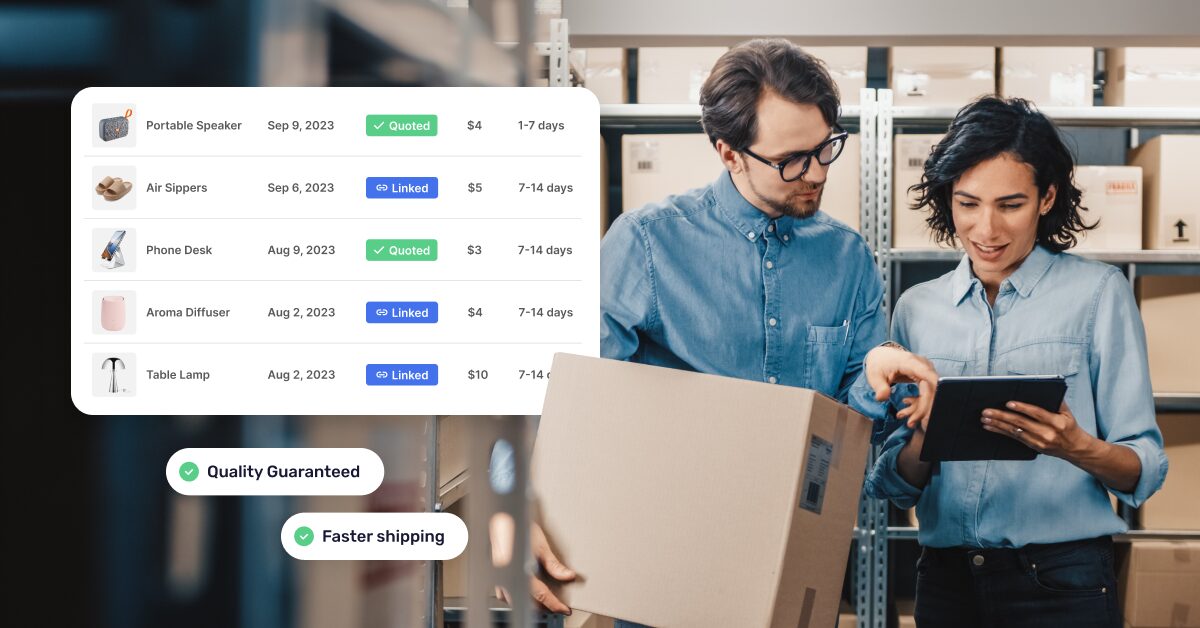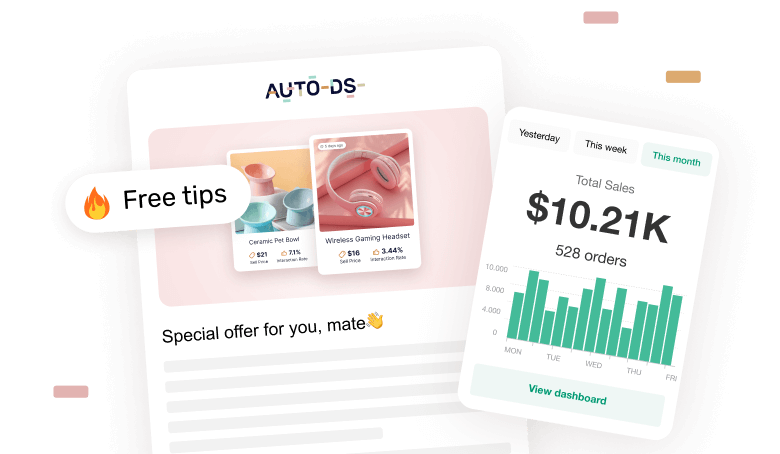Product sourcing is pretty much the “A” in the ABCs of dropshipping. It basically means importing products from a supplier’s website into your own online store so that your customers buy directly from you.
But how does this process work specifically for dropshipping? How can we optimize it? What types of product sourcing methods are there, and which is right for you? Patience, young padawan. In this article, we’ll answer all those questions and more.
You’ll also learn how AutoDS simplifies product sourcing by automating the entire process for dr fopshippers, saving time and reducing manual work.
Product sourcing involves finding and listing products in your store.
There are different types of product sourcing depending on your business model.
AutoDS, AliExpress, and Amazon are some of the best supplier options.
Supplier reliability and product quality are key in this process.
Through AutoDS, product sourcing is much easier and more efficient.
What Is Product Sourcing?
Product sourcing means finding the products you want to sell and making sure they’re ready to appear in your store, with transparent pricing, photos, descriptions, and shipping info. It’s the first essential step in building your inventory and shaping your store’s identity.
In simpler terms, it’s how your store gets its products.
Whether you’re keeping stock in your garage or dropshipping through a supplier, product sourcing is where everything begins. It helps you align your product catalog with your brand, your audience, and your goals. And when done right, it saves time, builds trust with your customers, and sets the foundation for scaling your business.
You can source manually by copying product data from a supplier’s site, or you can automate the process with tools like AutoDS to import everything in a few clicks: images, specs, titles, even variants. This means more time for marketing and customer care, and less time copying and pasting. But let’s not get ahead of ourselves.
Key elements of product sourcing:
- Choosing winning products for your niche.
- Importing them into your store with all the info needed.
- Keeping listings up to date with stock and pricing.
- Matching your product presentation with your store’s style.
Different Types of Product Sourcing

We don’t always approach product sourcing the same way, and of course, how we do it depends on what we want to achieve. eCommerce gives entrepreneurs several different paths to follow, each of which gives product sourcing a slightly different meaning. Let’s take a look at how it works across the following business models:
Dropshipping
Now widely recognized as one of the best business models for beginners and experienced eCommerce sellers, dropshipping offers significant advantages at nearly zero upfront cost. When it comes to product sourcing, your job is to choose the right product and market it through your store.
The key difference in dropshipping? You don’t need to hold inventory or invest in products upfront, since you’re working with a supplier who handles storage, packaging, and shipping.
And yes, AutoDS makes this process even easier by helping you import products, sync prices, and automate fulfillment—so you can focus on growing your business.
🆕 Beginner’s Tip: Master the dropshipping product sourcing through our 14-day trial for just $1!
Wholesale
In this model, you buy products in bulk from a supplier and store them yourself (or use a fulfillment service). Because you’re purchasing in larger quantities, you typically get a better price per unit, which can improve your profit margins.
Wholesale is common among Amazon FBA sellers, but also works well for any e-commerce business wanting more inventory control. Picture this: you buy 100 trending phone cases, store them, and sell each one individually for a profit.
Private Label
This approach involves sourcing generic products, usually straight from manufacturers, and customizing them with your own branding, packaging, and style.
While it requires more upfront investment than dropshipping or wholesale, it also allows for higher margins and builds brand recognition.
A good example is ordering a bulk batch of skincare products, adding your brand and custom packaging, and selling them under your own beauty label.
Manufacturing
If you’ve got a product idea no one’s thought of yet, and the budget to make it happen, manufacturing might be the way to go. You design a product from scratch and work with a factory (often overseas) to produce it at scale.
This is the most complex and expensive model, but it gives you complete ownership and a real competitive edge.
How Product Sourcing Works in Dropshipping
Well, since you’re reading this article, chances are you’re leaning toward dropshipping as your business model, right? That’s why we will dive deeper into the step-by-step process you need to follow to become an actual product sourcing sensei in this type of business.
1. Choose a product from a supplier
The step before product sourcing is product research, and it’s not something to skip! Mastering the art of finding items that boost your profit margins is a skill you’ll develop as you go deeper into the dropshipping world. Over time, you’ll learn to tell which products will perform well and which won’t, but here are a few helpful traits to look for from the start. What turns a random item into a winning product? They usually have one or more of the following characteristics:
- Solve a specific problem.
- Trending on social media.
- Small and easy to ship.
- Have a reasonable price point.
- Spark an emotional reaction.
- Tap into a specific hobby or interest.
These are just some of the qualities that can make a product fly off your virtual shelves. There are multiple strategies to find them. Platforms like Amazon and AliExpress already offer “Best Seller” sections that highlight top-performing products. Google Trends is also a great ally for checking demand and seeing how items relate to other products or niches.
🆕 Beginner’s Tip: Want to turbocharge your search? Explore AutoDS’s Hand-Picked Products Hub—a curated and constantly updated list of winning products you can add to your store in seconds.
2. List the product on your store
Now that you’ve got your winning products ready, it’s time to publish them on your store and give them your personal touch. There are two main ways to do this. I won’t pick sides… but one is way easier than the other. Still, here’s both so you can decide:
- Manual method: If you go this route, you’ll need to gather the product details, copy them over, download and upload all the images/videos/gifs/descriptions, and list each item one by one. It’s more hands-on, and while it works, it can take a ton of time, time you could be using to grow your business.
- Automated method: With automation software, your selected products can be listed in your store with just a few clicks. AutoDS’s One-Click Importer works exactly as it sounds. Just head to your marketplace panel, click “Add Products,” paste the product URL (or multiple URLs for bulk import), and boom—your listings are ready, complete with images, descriptions, and all the key info. You can still edit everything afterward to match your brand’s voice.

3. Sell, sell, sell!
Once your products are live, it’s time to connect with your audience through marketing. Strategies like email marketing or teaming up with an influencer can go a long way. As you develop your brand’s tone, you’ll discover new and better ways to communicate and define your target audience.
💡 Pro Tip: Want to understand why a competitor’s ad is crushing it (or flopping)? Check out the AutoDS Ad Spy Tool and unlock insights that could save you time and money.
Once the orders start rolling in, your job as a dropshipper is to forward them to your supplier. They’ll handle the packaging and shipping straight to the customer’s doorstep. But you’re still responsible for making sure everything goes smoothly, from the moment your customer clicks “Add to Cart” to when the doorbell rings. In other words, order fulfillment.
And yes, managing multiple orders can get overwhelming once things take off. But guess what? That’s where our good friend automation comes in. With Fulfilled by AutoDS, it’s as easy as pie.
What to Consider When Sourcing Products
Time to get serious. Yeah, I know, you’re eager to start sourcing like a champ, but hold on a second. Before we dive in, we need to talk about a few ground rules. Just like with everything else in life, product sourcing comes with some key considerations to avoid problems or setbacks.
Let’s take a look at the most important ones:
Supplier reliability
This one’s a non-negotiable. Your supplier is your business partner; if they mess up, it reflects on you. A supplier who runs out of stock often, takes too long to respond, or ships late will cost you customers and stress. Always choose suppliers with strong reviews, consistent stock levels, and reliable communication. Tools like AutoDS can help you monitor supplier performance and switch if needed.
Product quality
Let’s be real: no one wants to deal with complaints or returns because the product looked nothing like the photos. Poor-quality items don’t just hurt your profits; they hurt your brand. Order samples when possible to test things out for yourself. Check product ratings and customer reviews before importing anything. One unhappy buyer can leave a negative review that scares off ten potential buyers.
Shipping times
We live in a world of instant gratification. Customers expect their orders to arrive fast, even when they know it’s coming from overseas. That’s why it’s essential to set clear expectations and choose suppliers with tracking and decent delivery speeds. Use AutoDS to automatically update shipping times on your listings based on the supplier’s average delivery rate.
Return policy
It’s not the sexiest topic, but returns are part of the game. Each platform (like eBay, Amazon, or Shopify) has its own rules, and your supplier needs to match them. Make sure you know the supplier’s return policy, are returns allowed? Who pays for shipping? How long does it take to process a refund? Being transparent with your customers builds trust and protects your reputation.
Pricing and profit margins
You could find the coolest product in the world, but if your profit margin is low, it’s not worth it. Calculate everything: product cost, shipping fees, platform commissions, and even ad spend. Look for gadgets with low sourcing costs but high perceived value; these are perfect for upsells or bundles.
Legal restrictions
This part often gets overlooked, but it’s key, especially if you sell in the U.S., EU, or Amazon. Some products require certifications (like CE for electronics in Europe) or may be completely restricted in certain countries. Always double-check the legal side of things before listing a new item. Your supplier should provide documentation if needed, and if they don’t, take that as a red flag.
Where to Find Products to Source: Best Suppliers ShortList
We’ve discussed suppliers a lot, but I haven’t recommended any yet. The supplier is extremely important—it’s the Robin to our Batman, the fries to our burger, the Paul to our John. That’s why, before I go, I want to recommend a few trustworthy ones:
AutoDS Warehouse And Private Suppliers
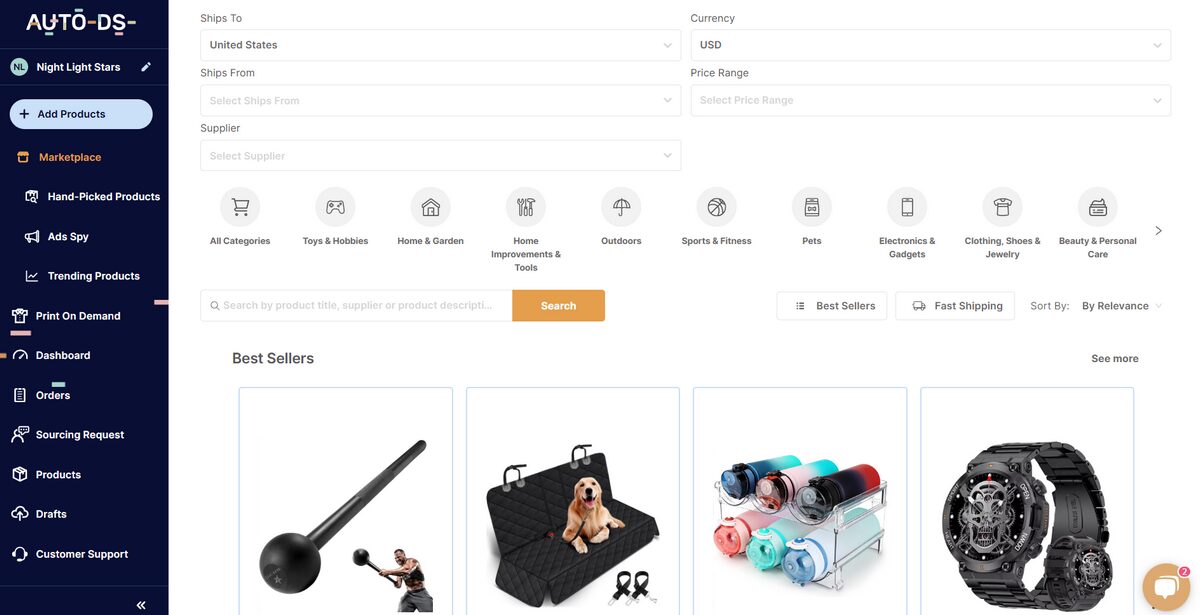
We’ve already covered some of the advantages of incorporating AutoDS into your dropshipping business. Among them, AutoDS completely simplifies the product sourcing process with advanced software, makes finding winning products easier, and offers various features that help you use your time more efficiently and make high profit margins easier to achieve.
But in addition to all this, it can be a huge help when it comes to finding suppliers. Why? Because it connects to a network of vetted suppliers. All you need to do is choose where you want to ship your products from and to, and the platform will search for suitable options for you. And that’s not all! Thanks to its warehouses, you can use AutoDS itself directly as a supplier.
Key Features:
- Automated product sourcing.
- Inventory and order management.
- Automatic price optimization.
- Order fulfillment automation.
- Multi-platform support.
- Bulk product import.
AliExpress
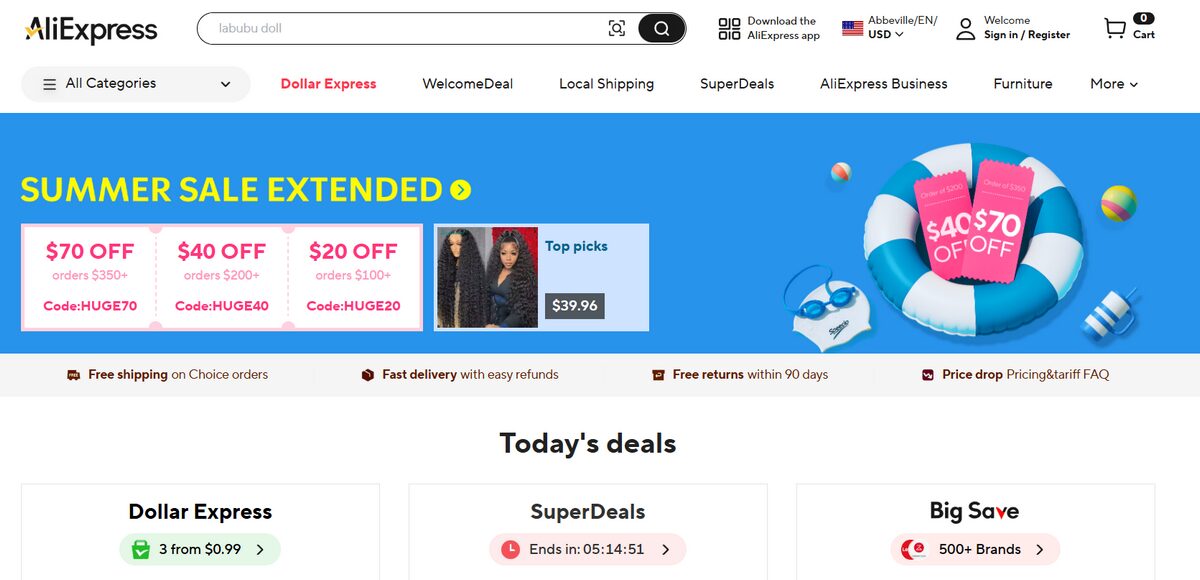
A classic in the dropshipping world, AliExpress is well-known for its huge variety of products and easy access for sellers of all experience levels. It’s an ideal platform for those looking for variety and competitive pricing. It also offers specialized tools for dropshippers and access to suppliers from various regions around the globe. Its rating system and the ability to contact suppliers directly add an extra layer of confidence for those just starting.
Key features:
- Massive catalog with millions of products.
- Global shipping options.
- Public ratings and reviews for each seller.
- No minimum order quantities.
Amazon

Amazon is synonymous with trust and speed in e-commerce. While its dropshipping model has more regulations, using Amazon as a supplier lets you offer your customers fast delivery times and well-known products. It’s ideal for dropshippers who want to stand out by offering a great customer experience and high reliability, as long as you strictly comply with marketplace policies.
Key features:
- Ultra-fast shipping with Amazon Prime and advanced fulfillment options.
- Strict quality control.
- Efficient returns process.
- Extensive catalog.
Walmart
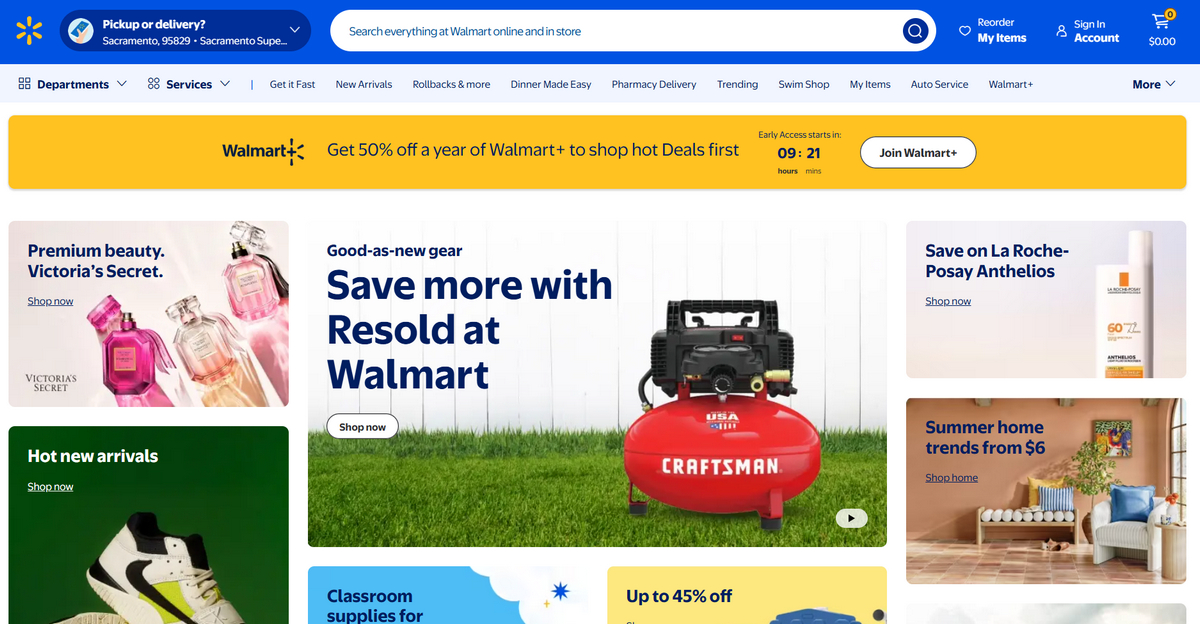
Walmart has become a strong option for dropship quality products with immediate shipping within the United States. Its marketplace allows access to a massive assortment and leverages the brand’s strict standards for service and compliance, helping keep customers happy and reducing returns.
Key features:
- Large and up-to-date selection.
- Fast shipping and in-store pickup options.
- Strict internal quality processes.
- Competitive pricing,
Target
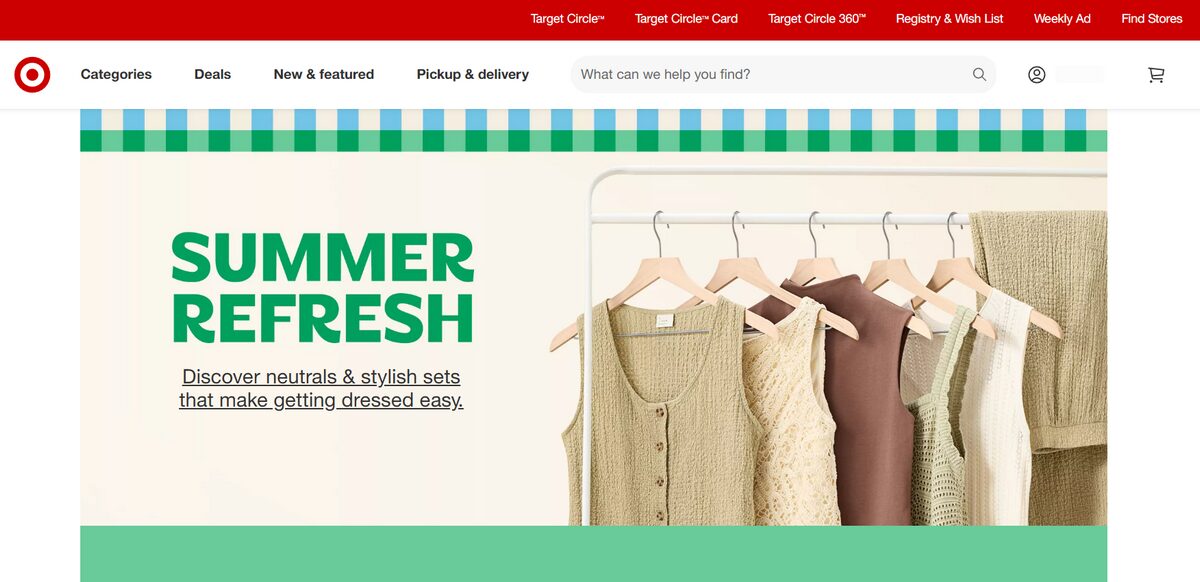
Target is known for its mix of trendy products and attractive prices with higher quality standards. Through its physical and online stores, it offers fast delivery and exclusive product options. It’s a great choice to stand out with trending items and make use of its logistics network.
Key features:
- Weekly deals and exclusive discounts.
- Friendly return policies.
- Programs like Target Circle and Red Card.
- Robust fulfillment system.
Frequently Asked Questions
What is product sourcing on Amazon?
Product sourcing on Amazon involves identifying and acquiring products for sale on the platform, often utilizing methods like dropshipping, wholesale purchasing, or private labeling.
What’s the difference between product sourcing and dropshipping?
Dropshipping is a specific product sourcing method where you do not maintain physical inventory. Instead, products are sourced from a supplier who then ships them directly to your customer after placing an order.
Where can I find products to source for my store?
You can find products for sourcing through various platforms and tools. For instance, AutoDS offers access to extensive product marketplaces with automated sourcing and fulfillment capabilities.
Conclusion
When starting dropshipping or other business models like wholesale or private label, product sourcing is one of the first essential steps.
With a reliable supplier on your side and the right product choices, you shouldn’t have any trouble executing it, even less so if you use platforms like AutoDS, which make product sourcing much more practical and efficient by automating resources.
I’ll leave you here, but if you want to continue exploring the amazing world of dropshipping, I’m sharing these three articles with you:






